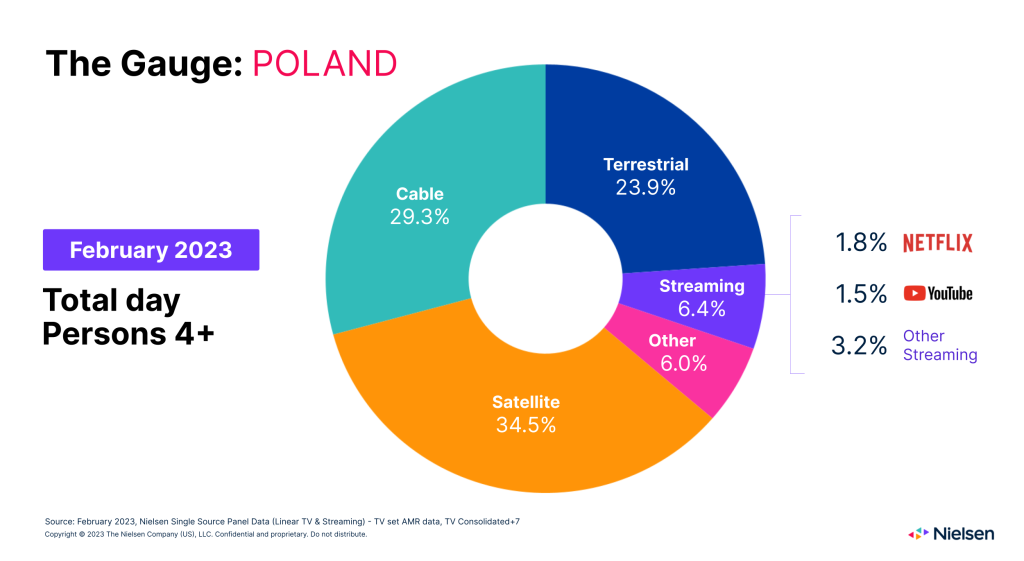Streaming viewership on the TV glass is on the rise. In February, Poles spent an average of 16 minutes a day watching streaming content on TV (an increase of 1 minute from January). Streaming viewership reached a record 6.4% of total TV time, surpassing 6% of TV usage for the first time.
Netflix and YouTube were the most popular streaming platforms. Together, they accounted for more than 50% of all streaming viewership on the TV glass. Netflix remained the most popular streaming option, retaining a 1.8% share of total TV viewership. We have, however, observed an increase in the viewing figures within the “other streaming” category, which includes providers that have not yet obtained a 1% share of TV usage (these services include HBO Max, Disney+, Viaplay, and SkyShowtime, which premiered on the Polish market in February 2023). None of these services alone captured 0.5% of total TV viewership, but the rise in their aggregate usage from 2.7% to 3.2% in February resulted in an overall increase in the streaming share. YouTube’s share also increased (from 1.3% in January to 1.5% in February).

About The Gauge
The Gauge was created to provide the media industry with a monthly analysis of television usage across key television delivery platforms. Nielsen published its first edition of The Gauge in the U.S. in May 2021.
About The Gauge Methodology
The data comes from Nielsen’s single-source panel consisting of 3,500 households and almost 9,700 panelists. The Gauge: Poland is based on monthly AMR (Average Minute Rating) audience share data. The data is presented for people over 4 years old, broken down into cable, satellite, terrestrial television (both linear and shifted in time up to 7 days), and viewership from streaming (live streaming viewership of TV stations on OTT platforms is classified as streaming viewership). The “Other” category includes views of unrecognized content.
Nielsen Poland created this iteration of The Gauge using methodologies conceptually similar to those in the U.S. version. Methodological differences should be considered when making any comparisons.
